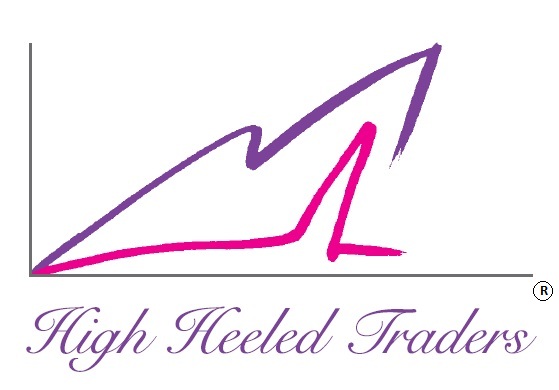Have you had the feeling of seeing something so successful, you thought, I should have invested in this?! Most of the 500 million users of Facebook probably think that! 🙂
Chuck Whitman, owner of a trading firm in Chicago, formerly also a trader, wrote in the Introduction of “ Trade Your Way to Financial Freedom” – “The market you trade is far more important than how you trade.” If you are in a busy market, there will be more opportunities. I am so convinced about this. I had a big paper-profit on a stock I had and ready to sell but there’s nobody to buy so I could close my transaction. Eventually, I sold at the below-value offer of one buyer.
So before getting into the details of how to trade, the trading process, let’s think about what you should trade. Here’s a list of things to think about:
- Opportunity
- Lifestyle
- Capital
__________________________________
Opportunity
1) Liquidity / Busy Markets
I’ve mentioned above that with higher volume, busy markets have more opportunities. It’s also easier to get profits out quickly and not to discount profits. (I think of it like a restaurant that is always busy because the food is sure to be good! 😛 ) It is important to trade only markets that are liquid – better if they are in the finance news sites or your Exchange’s Most Active lists regularly.
2) Market Moves
a) Up, Down, Sideways (Market Type) – can you profit when the market goes Up, Down or Sideways? This is why Options are becoming more and more popular, it has strategies for all those market moves. See the chapter “Keep Your Options Open” later.
b) Concept – what you trade must also follow the Trading Concept that you are using (or Shopping strategies we talked about at earlier chapter ) Examples are — Oil that follow Seasonals, as well as Trends, Bank stocks that have just been moving in range / follow Band Trading due to debt issues, Gold that is also following a Trend due to demand for “safe assets” when market is swinging wildly.
c) Volatility – this is the up and down move. This is important for the more active / short term trader. For example, if you have a stock that only move 5 cents a day, that’s not suitable for day trading. I once bought option on a stock that moved 10cents a day, it took me three months to complete the trade. (Kind of like a bad hairdresser – not coming back! 🙂 ).
3) Low-risk
a) Low-Risk, High Reward – certainly risk is found all over the market, but can you trade with low-risk on the market and get a high reward? I think this is very important as women and mothers, we don’t want to take big risks as we certainly have so many things we’d rather spend money on, and as an extension of that, we want to grow our fund (because we have a lot of things to spend money on.) 🙂
b) Can be wrong, still make money – I think this is another important criteria for women since we are “new” in this business and we don’t like big risk or lose money, it just helps to know that even with mistakes, we can employ strategies in a market can help us stay on the business, improve our skills and grow.
Lifestyle considerations
- Timeframe – this is about your availability. Will you be able to monitor your trade or be able to complete several trades a day – this is especially important for volatile markets like Forex. The stockmarket is more accommodating to different timeframes. Some stocks trade better than others.
- Interest / Access to information — this just makes your studying easier and gathering market knowledge more practical. Watch out for the “active movers” in the evening TV news regularly. If you are a migrant or like to travel, you could use your knowledge about countries, economies, aiding your study of markets and what to trade. Women as household managers and avid shoppers could certainly tap into knowledge and interest to assess companies that you deal with or patronize like consumer, utilities companies or bank. Remember : make money from people making money from you.
- Protection – can you use it to protect yourself (hedge) against rising prices? Ever felt helpless with rising price of gas? Or how fresh food prices has been jumping? Or interest repayments to your mortgage? Can be avoided by trading markets or stocks that can protect or compensate you for these lifestyle costs that keep rising.
Capital – How big is your capital?
- This is important because the number of units you can trade will achieve profits worth your effort and time.
For example, a share of Google is worth $528, if we have 5000, you can buy 9 shares. If you buy GE (General Electric) worth $ 19, with $ 5000, you can buy 263 shares. In a month’s time Google moves by $10, GE moves 1.25.
The following table shows how much money you can make with your capital:
| Stock and price | $5000 buys | Month move |
| GOOG is $528 | 9 | $10 x 9 = $90 |
| GE is $19 | 263 | $1.25 x 263 = $328 |
In the above, the more suitable stock to trade is GE than Google. I’ll take $328 than the $90.
So think whether your month’s trading will pay you well for your time and effort. Will you take this kind of pay when you work for somebody else? 😛
- Will you be able to satisfy all the financial responsibilities of trading ?
i) Some trading markets need you to take physical delivery, like the commodities Gold and Oil. So storage or warehouse should be part of your funding capability.
If you are interested in these commodities, but don’t have capital to trade the commodity itself, you can trade stocks producing or somehow involved (like transport) of these commodities, ETF (Exchange Traded Funds) or Derivatives ( Options)
ii) The margin requirements are also a consideration. Margin is just a part of the total sum of money to buy the asset, to secure the transaction. Some Options strategies also require margin. While it is attractive that only a portion of funds or margin is required to trade, the margin requirements change along with the value of the stock or asset being traded, you need to have enough funds to tolerate such changes in value.
- Will your capital be large enough to protect you?
i) Dr. Tharp writes in his book “Trade Your Way to Financial Freedom” that your capital is like a wall. The bigger the wall, the better the protection. This means your capital need to be large enough to withstand losses and allow you to keep trading. Also, I will share how I trade with protective strategy with a Covered Call and for that, you need to have enough funds to hold enough shares before you can write the Options contract that will protect it.
Weighty questions
That was quite a long list of considerations, certainly, each person would give different importance when selecting market to trade. Just to help you make a decision, score each one according to how much you think it is important to you, here’s an example
| Selection Criteria | Weighting | STOCKS | FOREX |
| Opportunity | |||
| Liquidity | 16 | ✔ | ✔ |
| Market Moves | 20 | ✔–with Options | ✔ |
| Low Risk | 21 | ✔-with Options | ✔ |
| Lifestyle | |||
| Timeframe (short) | 9 | ✔ | ✔ |
| Interest | 8 | ✔ | ✔ |
| Protection | 10 | ✔ | ✔ |
| Capital (5,000 example) | 16 | ✔ | X |
| TOTAL | 100 |
From the above,it looks like I have to emphasize looking for market that meets my Opportunity criteria, Low-Risk being number 1, followed closely by Market Moves, I want to have as many opportunities in different markets, then Capital and Liquidity with equal importance.
I’ve also provided an example indicating how Stocks and Forex could be evaluated against this criteria. Where I’ve indicated “with Options”, you need to employ Options strategies on the stock to be able to satisfy that criteria (for example, to lower risk). Still within Stocks, as mentioned, liquidity can be different.
FOREX, which trades 4 trillion dollars value per day, need to be traded with a big account (in the hundreds of thousands). With $5,000 capital think of yourself as the small fish swimming in a vast ocean of much bigger fish – you will get eaten. 🙂
Not a secret (anymore) : Market or stock to trade that satisfies all of the above criteria sets a good basis for low-risk trading.











